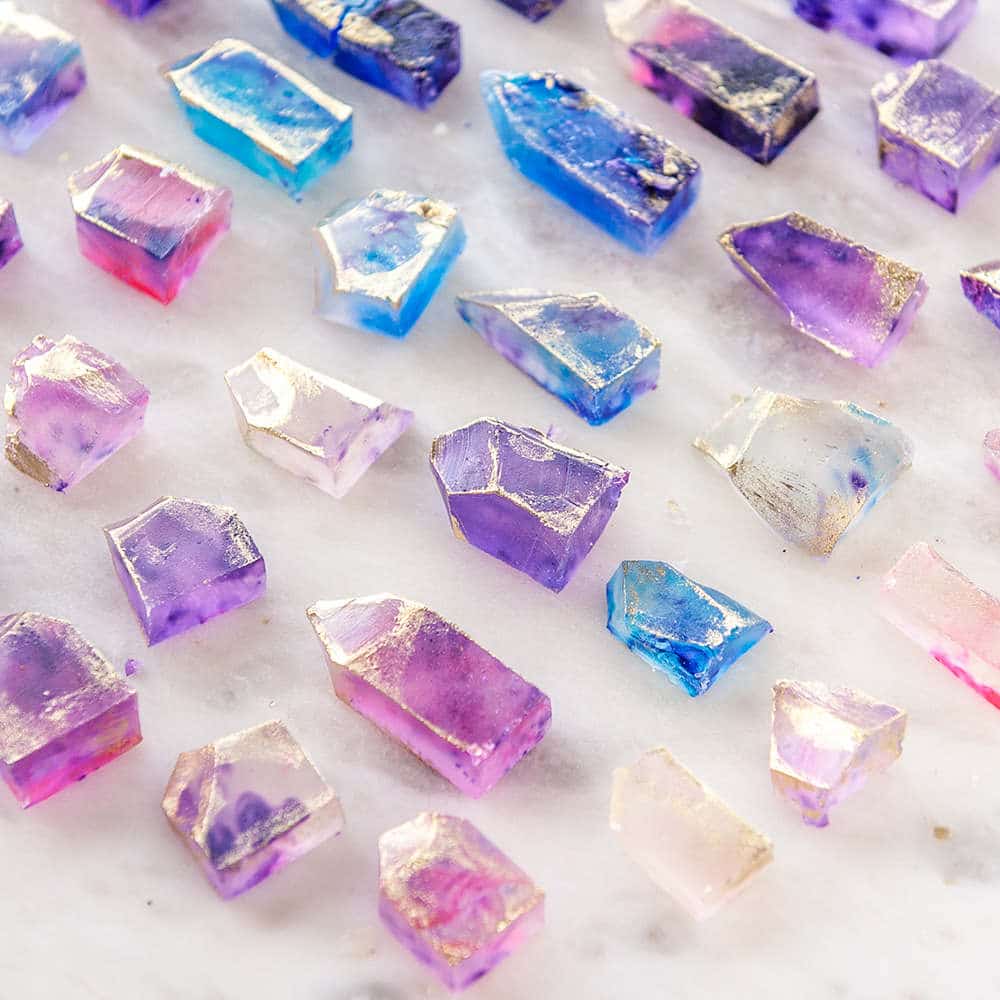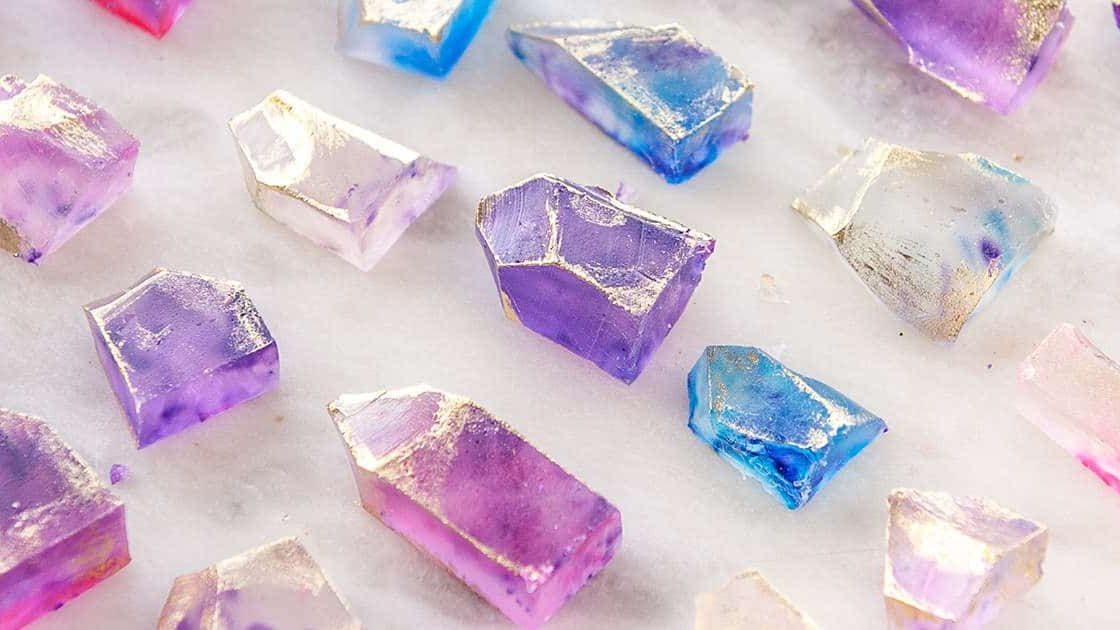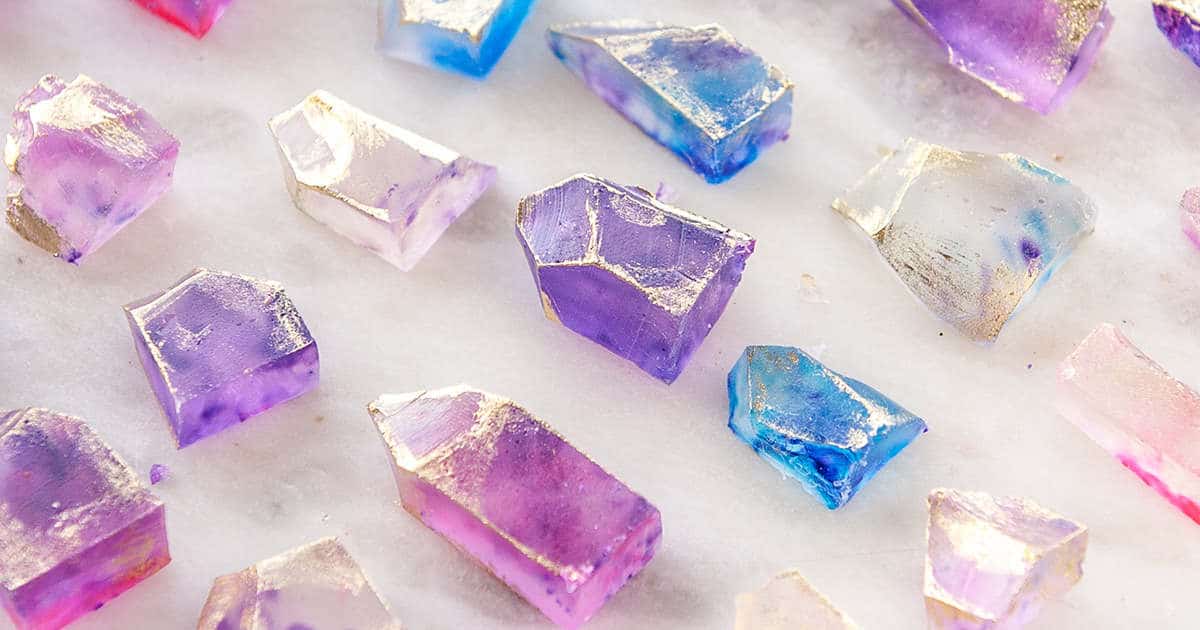Crafting delectable, glassy confections. A comprehensive guide to achieving brilliant, crystalline candies.
Crystal candies, characterized by their translucent, hard texture and vibrant colors, are achieved through a specific process involving meticulous control of sugar concentration and cooling rates. A simple syrup, composed of sugar and water, is heated until it reaches a specific temperature, often measured with a candy thermometer. This syrup is then cooled and often flavored with extracts or food coloring. The cooling process is critical; controlled cooling allows the sugar to crystallize in a uniform and consistent manner, resulting in the desired glassy appearance. Variations can include incorporating specific ingredients like fruit pieces or nuts to create layered, visually appealing treats.
These visually stunning treats offer a unique culinary experience, satisfying the desire for both beautiful and delicious confections. The precise control required in the creation process fosters a sense of accomplishment and pride in the finished product. Historically, the art of creating these candies has been an important part of culinary traditions around the world, often associated with special celebrations and festivities. The meticulous process of sugar crystallization enhances the inherent aesthetic appeal of these candies and makes them suitable for both entertainment and display.
Now, let's delve into the specific steps involved in crafting these beautiful and delicious treats.
Crystal Candy Creation
Mastering the art of crystal candy requires precise technique and understanding of crucial elements. These elements are pivotal in achieving consistent, high-quality results.
- Sugar concentration
- Temperature control
- Cooling rate
- Flavor infusion
- Shape manipulation
- Visual appeal
Precise sugar concentration determines the candy's hardness and texture. Accurate temperature control during the cooking process ensures proper crystallization. A controlled cooling rate is essential for uniform crystal formation. Flavor infusion adds desired tastes, while shape manipulation allows for unique designs. Visual appeal, achieved through color and shape, elevates the aesthetic value. For example, a slow cooling rate produces large, smooth crystals, while rapid cooling can create smaller, more granular ones, impacting the texture and final appearance. The interplay of these componentsfrom the basic scientific principles to creative shapingis crucial in successfully crafting crystal candies.
1. Sugar Concentration
Precise control of sugar concentration is paramount in crystal candy creation. The relationship between sugar content and the resulting candy's texture, hardness, and crystal structure is fundamental to the process. Variations in sugar concentration directly impact the candy's properties, affecting its ability to crystallize and its ultimate form.
- Impact on Crystallization
High sugar concentration fosters a greater propensity for crystallization. A higher sugar concentration in the solution allows for the formation of larger, more defined crystals during cooling. Conversely, a lower sugar concentration leads to a less pronounced crystal structure, often resulting in a softer, less visually appealing candy. This principle underpins the selection of the correct sugar-to-water ratio in the cooking process, a crucial element in achieving desirable crystal candy characteristics.
- Effect on Viscosity and Temperature
Sugar concentration affects the syrup's viscosity. Higher sugar concentrations generally yield a more viscous syrup, increasing the time required for reaching the necessary cooking temperature and influencing the cooling process, which must be carefully controlled to encourage uniform crystal formation. Conversely, a lower concentration results in a less viscous syrup that boils more quickly, with ramifications for overall cooking time and crystal formation.
- Relationship to Melting Point and Hardness
The sugar concentration profoundly impacts the candy's melting point and hardness. Higher concentrations typically lead to a higher melting point and a harder candy. This is because a higher sugar content necessitates a greater amount of heat for the sugar molecules to rearrange into the crystalline structure. This principle dictates the required cooking temperature and subsequent cooling strategy, both critical to producing the desired texture and appearance.
- Precision in Measurement and Control
Accurate measurement and consistent control of sugar concentration are crucial in this process. Variations in sugar concentration can lead to undesirable results, including uneven crystal formation, incomplete crystallization, or even crystallization failure. Employing precise measurement tools and adhering to established procedures minimizes these risks and ensures that the crystal candy creation process produces a uniform, aesthetically pleasing product.
In summary, sugar concentration is not merely a factor but a critical variable influencing practically every aspect of crystal candy creation. Understanding its interplay with other factors, such as temperature and cooling rate, is essential for achieving optimal results.
2. Temperature Control
Precise temperature control is fundamental to achieving successful crystal candy creation. Maintaining the correct temperature throughout the cooking and cooling processes is crucial for proper sugar crystallization. Variations in temperature can lead to undesirable results, ranging from incomplete or uneven crystallization to the formation of undesirable textures and forms. Understanding the role of temperature, from initial heating to final cooling, is essential for achieving the desired crystalline structures.
- Impact on Sugar Solution Viscosity
Temperature significantly influences the viscosity of the sugar solution. As temperature increases, the viscosity decreases, impacting the syrup's flow properties and the overall cooking process. Conversely, a decrease in temperature leads to increased viscosity, which affects the syrup's ability to flow and impacts the rate of sugar crystallization. Understanding this relationship between temperature and viscosity is critical for the proper manipulation of the syrup's consistency during cooking and cooling phases.
- Role in Crystallization Kinetics
Temperature directly affects the rate of crystallization. Higher temperatures accelerate the process, while lower temperatures slow it down. Careful monitoring and control of the temperature throughout the process are essential for achieving consistent crystal size, shape, and structure. This relationship between temperature and crystallization rate guides the timings of the cooking phases.
- Influence on Sugar Inversion
Excessive heat can lead to sugar inversion, resulting in a different, less desirable candy texture. Precise temperature control is vital to prevent this, allowing for the correct crystalline formation to occur. Maintaining the appropriate temperature prevents deviations from the desired properties.
- Control during Cooling Processes
Temperature control during the cooling phase is as crucial as during the cooking phase. Slow, controlled cooling allows for larger, more uniform crystals to develop. Rapid cooling can lead to smaller, less defined crystals or even prevent crystallization altogether. The cooling process requires meticulous temperature management to achieve the intended crystal morphology.
In conclusion, temperature control is a multifaceted aspect of crystal candy creation. Mastering its various roles from influencing the viscosity of the sugar solution, impacting crystallization kinetics, minimizing the risk of unwanted inversions, and controlling the cooling process ultimately determines the quality, aesthetics, and texture of the final product. Precise temperature control underpins the entire process.
3. Cooling Rate
The cooling rate employed during the crystal candy-making process is a critical factor influencing the final product's characteristics. This factor dictates the size, shape, and overall structure of the crystals, profoundly affecting the aesthetic appeal and sensory experience of the finished confection. Careful control of the cooling process is indispensable for achieving the desired crystal candy structure.
- Impact on Crystal Size and Shape
A slow, controlled cooling rate allows ample time for larger sugar crystals to form. This results in larger, more defined crystals, contributing to the characteristic glassy appearance and texture associated with high-quality crystal candies. Conversely, rapid cooling inhibits the formation of large crystals, leading to smaller, more granular crystals, potentially compromising the aesthetic and tactile attributes. This principle directly influences the final visual presentation and the tactile experience of the candy.
- Effect on Crystal Uniformity
A consistent cooling rate ensures the formation of uniform crystals, minimizing variations in size and shape. Fluctuations in temperature during cooling can induce inconsistencies in crystal growth, leading to an uneven appearance and texture. The uniformity of the cooling process is therefore fundamental in achieving a visually appealing final product.
- Relationship to Crystal Structure and Texture
The cooling rate directly affects the internal structure of the crystals. Slow cooling allows the sugar molecules to arrange into larger, more ordered structures. This impacts the texture of the candy; slower cooling generally results in a harder, more crystalline texture, while faster cooling can produce a softer, less structured texture. This characteristic of the product influences its intended use and enjoyment.
- Strategies for Controlled Cooling
Methods for controlled cooling encompass placing the candy in a cool environment, such as a refrigerator or a cold room, or using techniques that progressively decrease the temperature of the candy's surface. This slow, progressive cooling procedure is essential for the consistent development of larger crystals and results in the desired characteristic hardness and form. Different strategies accommodate varied circumstances and ingredient combinations.
In summary, cooling rate is a decisive factor in crystal candy creation. Understanding and manipulating this factor allows for precise control over crystal size, shape, uniformity, structure, and texture, thereby contributing significantly to the final quality of the candy, from both aesthetic and sensory perspectives. A carefully designed cooling regimen directly impacts the overall success and enjoyment of the product.
4. Flavor Infusion
Flavor infusion is an integral component in the process of crafting crystal candies. The choice and method of introducing flavor directly impact the final product's sensory experience. Proper integration ensures the flavor complements the candy's inherent characteristics, enhancing rather than overpowering the crystalline texture and structure. The process involves carefully selecting compatible flavors and employing techniques that minimize unwanted effects on the crystallization process.
Several considerations dictate effective flavor infusion. The type of flavoring agentnatural extracts, artificial flavorings, or fruit pureessignificantly influences the taste profile and the potential impact on the candy's texture and appearance. For instance, fruit purees might impart desirable color and flavor but potentially disrupt the crystal structure if not incorporated at the correct stage. Conversely, precisely measured extracts can add complexity without compromising the candy's crystallinity. The timing of flavor addition during the cooking process is equally critical. Adding extracts during the early stages of the cooking process allows flavors to properly infuse into the sugar syrup, whereas introducing them later can result in a less harmonious combination. Furthermore, precise measurement is vital to avoid overpowering the delicate balance of flavors. An excess of flavoring agents can mask the subtle sweetness of the sugar crystals, rendering the resulting candy less appealing.
Understanding the interplay between flavor infusion and crystal candy creation is essential for producing high-quality confections. A meticulous approach to flavor selection and integration enhances the overall appeal of the candy. Success hinges on careful consideration of flavor compatibility with the sugar base, the timing of addition, and the quantities employed. This nuanced understanding elevates the simple act of adding flavor to a key strategic element in crafting a desirable culinary outcome. This knowledge empowers individuals to create truly unique and appealing crystal candies that showcase the combination of precise control and delectable flavor.
5. Shape Manipulation
Shape manipulation in crystal candy creation transcends mere aesthetics; it's a critical element affecting the structural integrity and sensory appeal of the final product. Precise techniques in shaping the candy during the cooling process dictate the final form and often determine the success of the entire project. Methods employed influence the crystal's growth pattern, impacting the candy's internal structure and visual presentation. Control over the cooling and molding process is crucial for achieving the desired shape and maintaining the integrity of the crystalline structure.
Techniques for shape manipulation encompass a range of methods, each with specific implications. Molding using various materials like silicone or metal allows for complex shapes, though the specific material impacts the cooling rate and potentially the crystal's internal structure. Employing specific molds also introduces the possibility of unwanted imperfections or variations if not properly maintained. Alternatively, careful placement of ingredients, such as nuts or fruits, within the still-molten candy can yield intricate patterns and textures. The timing of these additions during the cooling process is critical to ensure the integrity of the crystal formation and prevent the embedded materials from disrupting the crystalline structure. The precise location of the inclusions dictates the candy's aesthetic appeal and potentially its structural stability. Real-world examples of successful shape manipulation include sculpted candy pieces, intricately patterned candy designs, or decorative candy creations featuring embedded elements, all of which demonstrate how shape manipulation enhances visual appeal and distinguishes one candy from another.
Shape manipulation, therefore, isn't merely an aesthetic choice but a critical aspect of crystal candy creation. Mastering these techniques demands precise control over temperature, cooling rate, and the placement and incorporation of any embellishments. Understanding the intricate interplay of these elements results in the production of structurally sound, visually appealing, and ultimately, more enjoyable crystal candies. The effectiveness of shape manipulation underscores its crucial role in enhancing the overall sensory experience and value proposition of the final product, thereby distinguishing it from simple, amorphous candy forms.
6. Visual Appeal
Visual appeal in crystal candy creation transcends mere aesthetics; it's a critical component deeply intertwined with the entire process. The visual presentation directly influences consumer perception and desirability. Attractive appearance enhances appeal, driving sales and consumer satisfaction. Achieving this visual appeal requires meticulous attention to detail throughout the production stages, from careful selection of ingredients and techniques to the precise manipulation of shape and color.
A visually appealing crystal candy evokes a stronger sensory response. The interplay of translucent clarity, vibrant color, and intriguing shapes contributes to a more memorable and desirable confection. Consider, for example, a meticulously crafted crystal candy with embedded edible flowers: the delicate beauty of the flowers enhances the overall visual appeal, captivating the eye and adding a distinctive character to the candy. Similarly, the use of contrasting colors or shimmering elements can create a stunning visual impact, highlighting the artistry of the creation. The visual impact also depends on consistent crystal formation, avoiding imperfections that detract from the overall aesthetic. Real-world examples showcase how well-executed visual appeal leads to increased customer engagement, attracting attention in retail displays and enhancing the overall desirability of the product.
Ultimately, achieving visual appeal in crystal candy requires a nuanced understanding of the entire production process. This includes mastering precise techniques for sugar crystallization, controlling cooling rates, selecting complementary colors and flavors, and expertly manipulating shapes. Failure to address visual appeal can result in a product lacking consumer appeal and diminished commercial viability. Thus, incorporating visual appeal as a core component of the candy-making process isn't simply about aesthetics; it's a strategic imperative for success in the marketplace. By understanding the deep connection between visual appeal and the technical aspects of crystal candy creation, artisans can craft more compelling and desirable products that resonate with consumers and achieve greater commercial success.
Frequently Asked Questions About Crystal Candy
This section addresses common inquiries surrounding the creation of crystal candies. Precise techniques and meticulous attention to detail are crucial for successful outcomes.
Question 1: What is the optimal sugar-to-water ratio for crystal candy?
The precise sugar-to-water ratio varies based on the desired consistency and type of crystal candy. Generally, a higher sugar concentration yields a harder, more crystalline candy. Recipes often specify precise ratios for achieving optimal results. Experimentation may be necessary to discover the ideal balance tailored to individual preferences.
Question 2: How crucial is temperature control throughout the process?
Temperature control is paramount. Precise temperature maintenance during the cooking and cooling phases is essential for consistent crystal formation. Variations in temperature can lead to inconsistencies in crystal size, shape, and texture. Employing a candy thermometer and a controlled cooling environment are vital for achieving desired outcomes.
Question 3: What techniques can ensure even crystal formation?
Ensuring even crystal formation requires controlled cooling. Slow, gradual cooling allows larger crystals to form uniformly. Rapid cooling can lead to smaller, less defined crystals. Maintaining a consistent temperature throughout the cooling process is crucial to avoid temperature fluctuations that disrupt consistent growth.
Question 4: Are there specific tools needed for crystal candy creation?
Essential tools include a candy thermometer for precise temperature monitoring, heavy-bottomed cookware for even heating, and molds for shaping the candy. Specific tools like spatulas and cooling racks may also be beneficial depending on the recipe and preferred techniques. Careful selection and use of tools enhance the accuracy and efficiency of the process.
Question 5: What are common pitfalls to avoid in making crystal candies?
Common pitfalls include inconsistent temperature control, improper sugar-to-water ratios, and inadequate cooling rates. Insufficient attention to detail during any stage can hinder the achievement of a desirable crystalline structure. Proper technique, precise measurements, and consistent application of the selected methods minimize the likelihood of encountering these issues.
Understanding these frequently asked questions will empower individuals to embark on crystal candy creation with increased confidence and better chances of success. Successful outcomes hinge on meticulous attention to detail and a thorough understanding of the scientific principles at play.
Now, let's delve into the detailed process of crystal candy making, exploring the specific techniques and steps involved.
Conclusion
Crystal candy creation demands a meticulous approach, encompassing precise control of numerous variables. Sugar concentration, temperature management, and cooling rate are pivotal factors influencing crystal size, shape, and overall quality. Flavor infusion and shape manipulation, though distinct, contribute to the final product's sensory appeal. A profound understanding of the interplay between these factorsfrom precise measurements to controlled coolingis paramount for successful outcomes. Adherence to established techniques minimizes the likelihood of errors and maximizes the chances of achieving consistently beautiful and delectable crystal candies. The article comprehensively explores the multifaceted aspects involved, offering practical insights and actionable steps.
The pursuit of mastery in crystal candy creation requires ongoing practice and refinement. Diligent experimentation with variations in ingredients, techniques, and presentation fosters development of personalized approaches. Ultimately, the rewards extend beyond simply producing aesthetically pleasing treats; the process instills appreciation for scientific principles in culinary artistry, fostering a deeper understanding of the intricate relationships between variables and outcomes. Further exploration of specialized techniques or advanced flavor pairings will allow for continuous advancement in the craft, leading to increasingly sophisticated and imaginative crystal candy creations.
Article Recommendations



ncG1vNJzZmibkafBprjMmqmknaSeu6h6zqueaKyYmnqzu8ueZKieXZi8r7%2FEp6tooJ%2BserW7jKaYpJ1dmL%2B6v9Oao2abkaOxunrHraSl